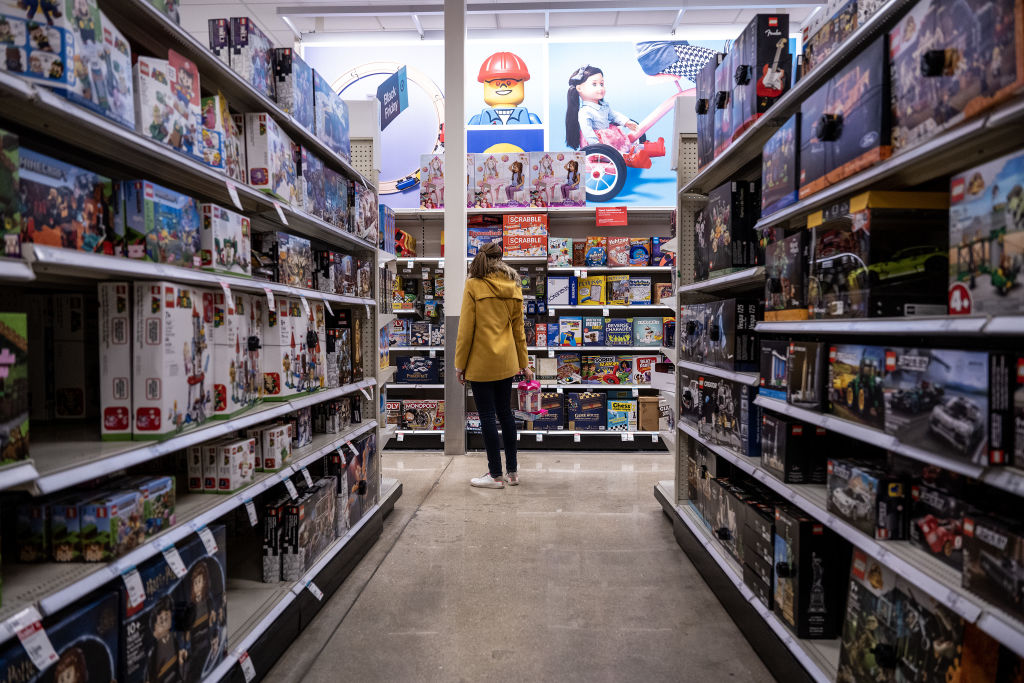
A strange loop keeps happening in the U.S. economy: prices go up, forecasters predict that consumers will restrain their spending, and then we learn that consumers are unfazed by rising prices.
The government’s latest inflation numbers, released Tuesday, March 14, suggest that this is still happening. The Consumer Price Index in February rose 6% from the same period a year ago, signaling that inflation has not slowed as much as economists had hoped. The cost of food was up 9.5% from last February, electricity was up 12.9%, and shelter was up 8.1%.
The inflation numbers come after better-than-expected February job numbers and as the government said in late February that U.S. consumer spending increased in January by the most in nearly two years.
Many economists explained these continuously rising inflation numbers by suggesting that this is just a data collection problem. The 8.1% increase in the cost of shelter—one of the largest increases since the early 1980s—accounted for 60% of the total increase in the cost of all items except food and energy. But the government’s shelter data may not be capturing what’s actually happening in the housing market. After all, rent prices are already falling and the housing market appears to be softening. Take out the shelter jump, says Gregory Daco, chief economist at consulting firm EY Parthenon, and the prices of goods and services are rising at a slower rate than they had in previous months—the entire price index for urban consumers rose 0.4% from the previous month, whereas in January it rose 0.5%. “We may be very surprised by a turn into very low inflation in coming months,” he says.
But there’s another way to look at these inflation numbers, and at this strange economic cycle: prices are continuing to rise because consumers just don’t care that much anymore. After all, brands including Procter & Gamble and Unilever are continuing to increase their prices, and say they will keep doing so this year. The cost of food at home—essentially groceries—was up 10.2% from last year.
Nearly half of 100 consumer packaged goods companies surveyed by Advantage Solutions, an industry consultant, said they planned to increase their prices in the first six months of 2023. Even Nestle, the world’s largest food group, said it increased prices by 8.2% last year and that it would continue to raise its prices in 2023.
In past times, when companies raised their prices, they expected consumers to stop spending, or at least to buy less expensive brands. But that doesn’t seem to be happening this time around.
“In pricing for inflation, we have been relentless,” Michael McCain, the president and CEO of the packaged meats company Maple Leaf Foods, said on an earnings call March 9, adding that the company would take “accelerated pricing action” in the first half of 2023. But still, the company said, consumers kept spending. Over the last year, many other companies have told investors that they increased prices and were surprised that consumers didn’t seem to react very strongly. (The inflation numbers show that the price of ham was up 3% from January.)
Some economic research suggests that this is not just a 2023 phenomenon, but that consumers have become more inured to rising prices over time. One paper examined markups in consumer products from 2006 to 2019 and found that companies continued to increase the cost of their products and that consumers did not change their behavior—they kept buying the same brands and the same products. Consumers became about 30% less price sensitive over the time period, the paper estimates. In one example, consumers who would have shopped around would have found that the same allergy drug was priced at $13 at one store and $18 at another—but they were willing to just buy the more expensive one if they came upon it first.
“People have been conditioned to go out there and buy what’s right in front of them,” says Alexander MacKay, a Harvard Business School professor and one of the authors of the study. Americans may be less price sensitive because of the increased demands on their time, he says—if time is money, they’re not going to spend too much time clipping coupons or going to different stores to find the cheapest products. “People are saying that it’s not as worth it to save $0.20 on an item as it was 10 years ago,” he says.
The pandemic likely accelerated that indifference as Americans balanced work and childcare and homeschooling. And indeed, the amount of time that Americans spend shopping has steadily declined over the decade, according to the American Time Use Survey.
But this time-saving appears to have an effect on inflation. The extent to which companies raise prices, MacKay says, depends on how price sensitive consumers are. If companies can continue rising prices without pushback, he says, they’ll do so. And consumers appear to be encouraging this by trying to save time. One solution, MacKay says, is to be a little more active in price shopping, since even online markets have a pretty big range of prices. Otherwise, companies owe it to their shareholders to keep charging more.
“Companies keep saying they are surprised by how insensitive consumers are to prices,” he says. “If you raise prices by 5% and consumers don’t push back, that may give you the motivation to try another price increase.”
More Must-Reads From TIME
- The 100 Most Influential People of 2024
- Coco Gauff Is Playing for Herself Now
- Scenes From Pro-Palestinian Encampments Across U.S. Universities
- 6 Compliments That Land Every Time
- If You're Dating Right Now , You're Brave: Column
- The AI That Could Heal a Divided Internet
- Fallout Is a Brilliant Model for the Future of Video Game Adaptations
- Want Weekly Recs on What to Watch, Read, and More? Sign Up for Worth Your Time
Contact us at letters@time.com